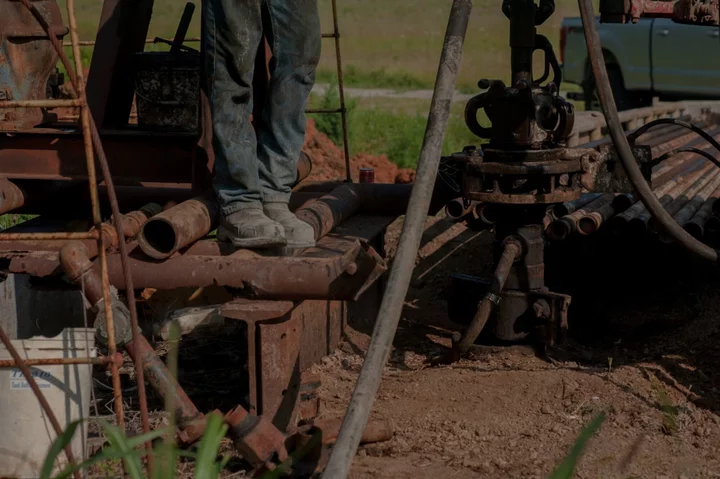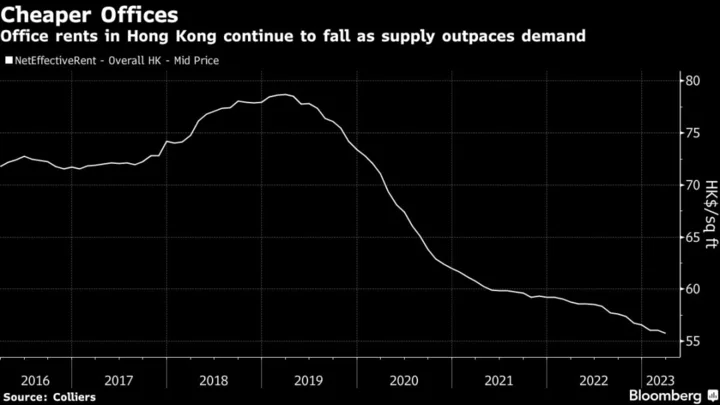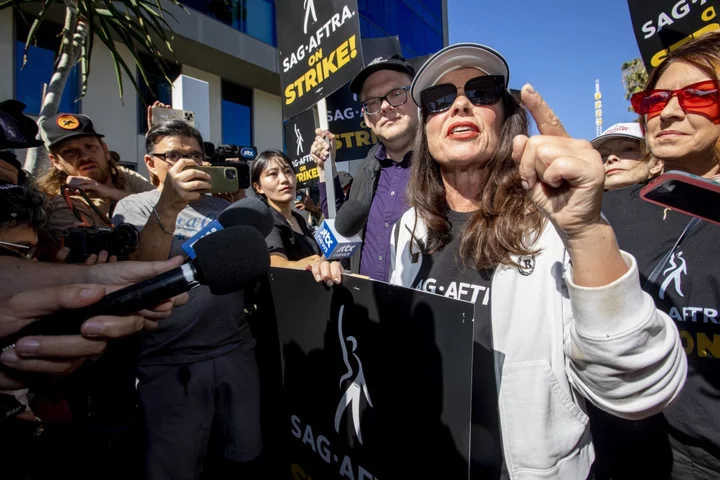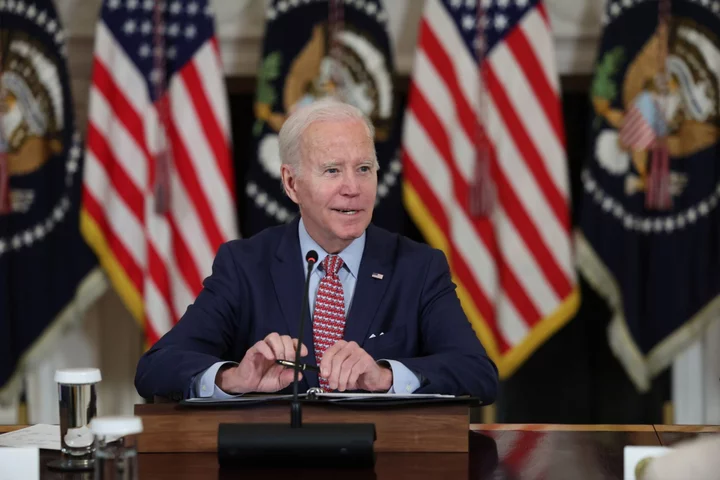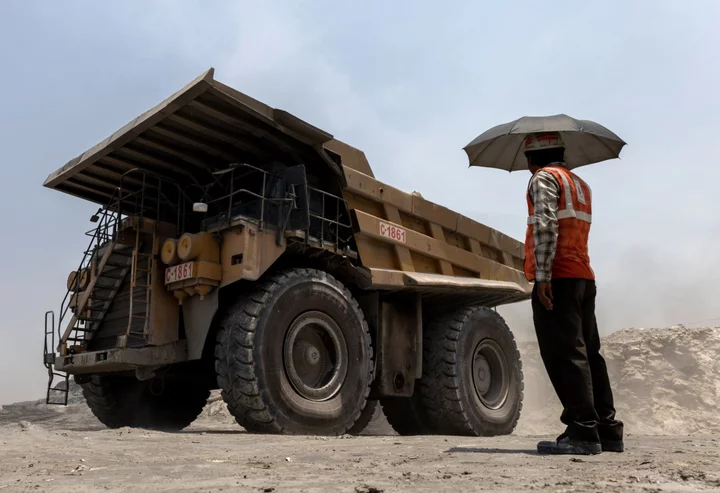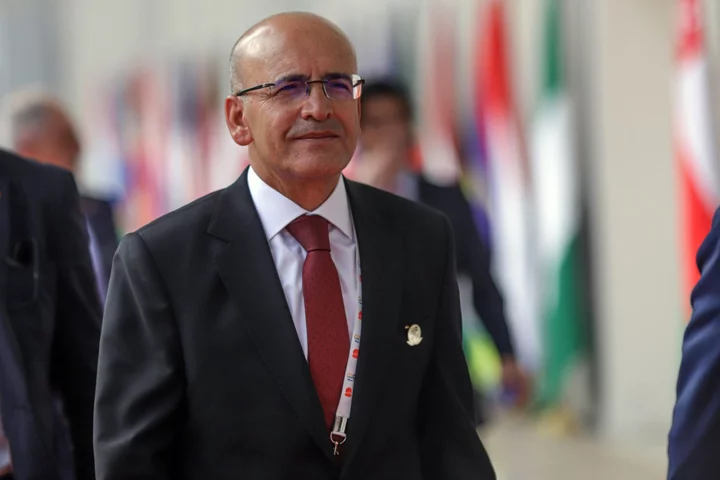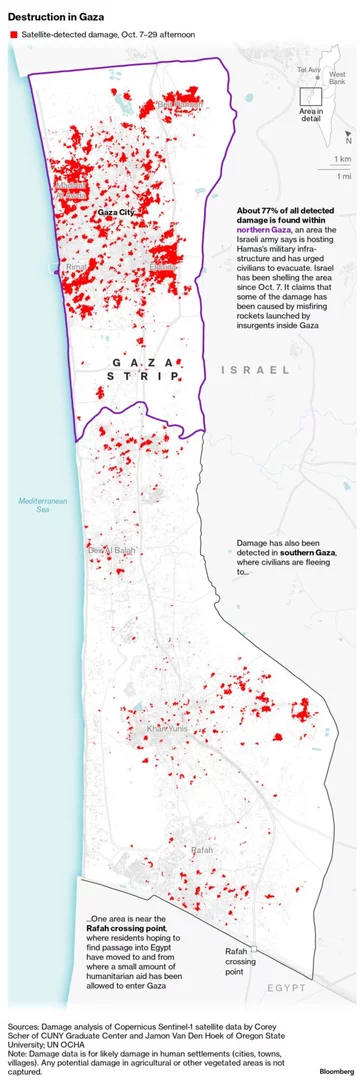COP28 Daily Reports: Sign up for the Green Daily newsletter for comprehensive coverage of the climate summit right in your inbox.
The Biden administration moved Saturday to crack down on methane emissions from the oil and gas sector, by finalizing newly strengthened mandates forcing companies to replace leaky equipment and regularly search for escaping gas.
The final regulation announced by the US Environmental Protection Agency and Biden administration officials at the COP28 climate summit in Dubai comes amid intensifying global focus on methane, an especially potent greenhouse gas that’s at least 80 times more powerful than carbon dioxide in warming the atmosphere during the first two decades after its release. The rule is the culmination of a three-year EPA quest to stifle methane releases from existing oil wells and equipment — coming roughly a decade after the first initial steps to indirectly regulate that pollution.
Oil and gas operations are the largest industrial source of methane pollution in the US. While methane is the prime component of natural gas — and valued as a source of energy — the gas can leak errantly from pipelines and processing equipment, or be vented and flared at oil wells that lack infrastructure to carry away the fossil fuel.
EPA Administrator Michael Regan said the plan represented “historic action to reduce climate pollution.”
“We’ve crafted these technology standards to advance American innovation and account for the industry’s leadership in accelerating methane technology,” he said in a news release.
The US government estimates the requirements would prevent some 58 million tons of methane from being released into the atmosphere from 2024 to 2038. And because of methane’s potency, that’s roughly equivalent to all the carbon dioxide emitted by the power sector in 2021.
The requirements are set to be the strongest in the world — providing inspiration to other countries now “zeroing in on methane as a key climate risk,” said Fred Krupp, president of the Environmental Defense Fund.
The measure was tightened from earlier proposals to include a phased-in requirement to eliminate routine flaring of natural gas from newly constructed oil wells. Environmental activists panned earlier iterations of the plan for not doing enough to go after the practice, since burning methane generates carbon dioxide at best, and, when flares burn inconsistently, results in methane discharges instead. Routine flaring at some lower-emission existing wells would be grandfathered.
But the EPA also gave companies more time to replace some leak-prone devices after industry officials warned that long supply chain delays would make it impossible to procure new equipment in time.
Read More: Oilfield Supply Crunch Imperils Biden Bid to Plug Methane Leaks
The EPA held firm on its controversial plan to empower private citizens and groups to help police the industry by requiring oil and gas companies to investigate incidents when notified by the agency that third parties had detected large emissions events at their sites. The planned super emitters program would effectively elevate the role and importance of methane surveillance — whether done by activists wielding infrared cameras or satellites circling the globe. Supporters say the initiative could push oil companies to respond more swiftly to leaks that otherwise could go unreported.
Read More: Companies Push Back on Science Showing Their Methane Pollution
However, in response to industry criticism, the EPA altered its earlier proposal to ensure the agency first vets those third-party reports and limit when they can be filed.
The EPA projects the requirements could add an extra 25 cents to the cost of a barrel of oil in 2038 — though the agency forecasts total net benefits of at least $7.3 billion a year from averted harm to the climate and human health tied to ozone exposure.
The American Petroleum Institute said it was still reviewing the regulation.
“We share the administration’s goal of reducing methane emissions, and smart federal regulation can help build on industry’s progress to date,” said Dustin Meyer, a senior vice president of policy for the API. “To be truly effective, this rule must balance emissions reductions with the need to continue meeting rising energy demand.”
Oil industry leaders have emphasized that many companies already are moving more aggressively to stem methane pollution — especially since it undermines the green bonafides of natural gas being pitched as a cleaner alternative to coal.
But environmentalists said the mandates will spur laggards to clean up, too.
“Leaders in the industry are already doing what these rules will require,” said Manish Bapna, president of the Natural Resources Defense Council. “With these standards, the rest will need to cut their harmful pollution as well.”
Author: Jennifer A. Dlouhy

